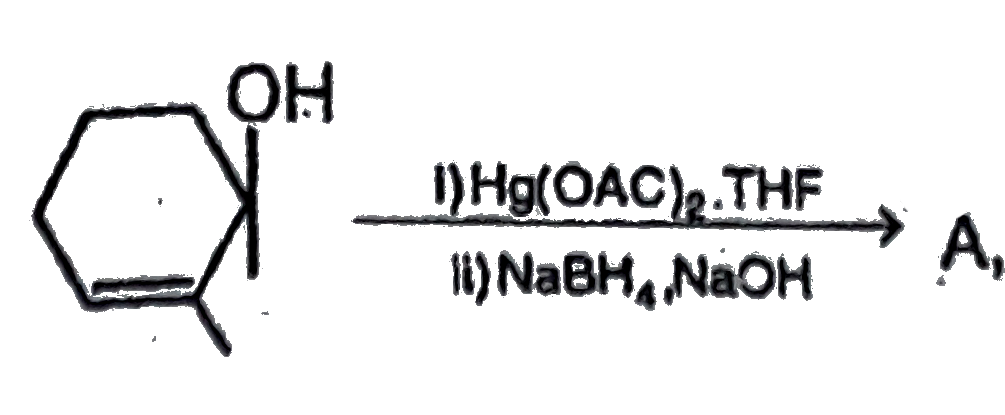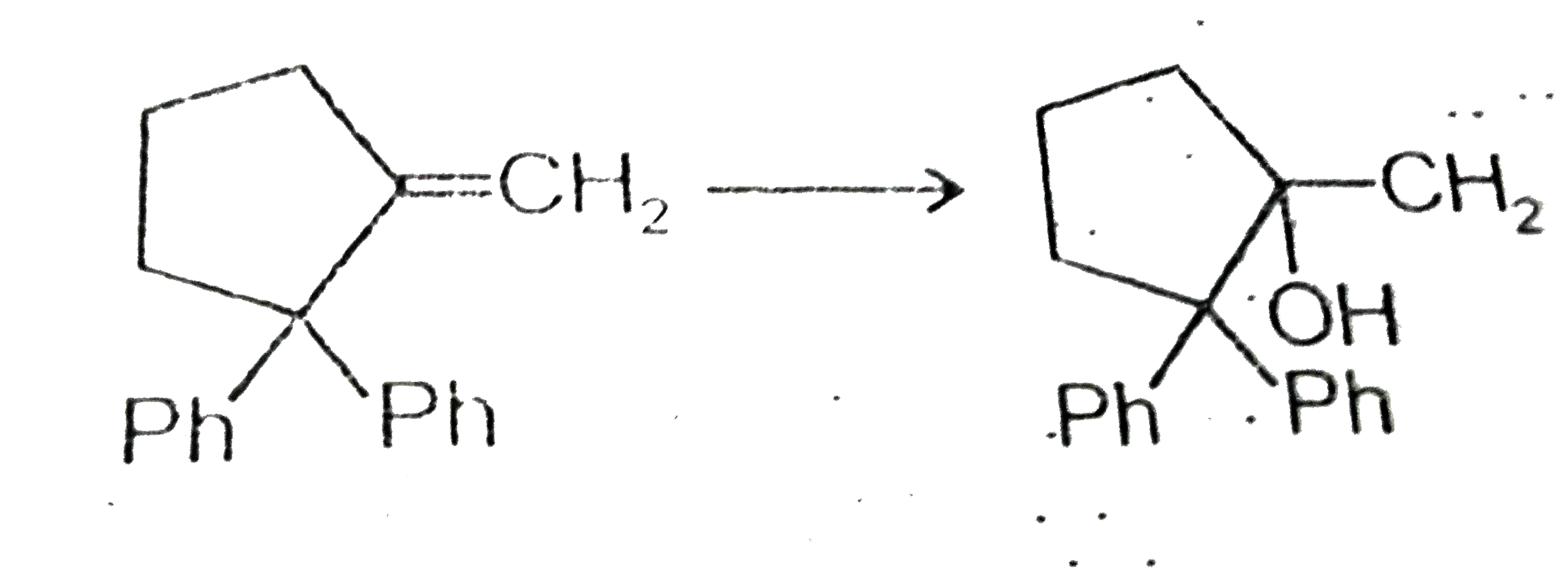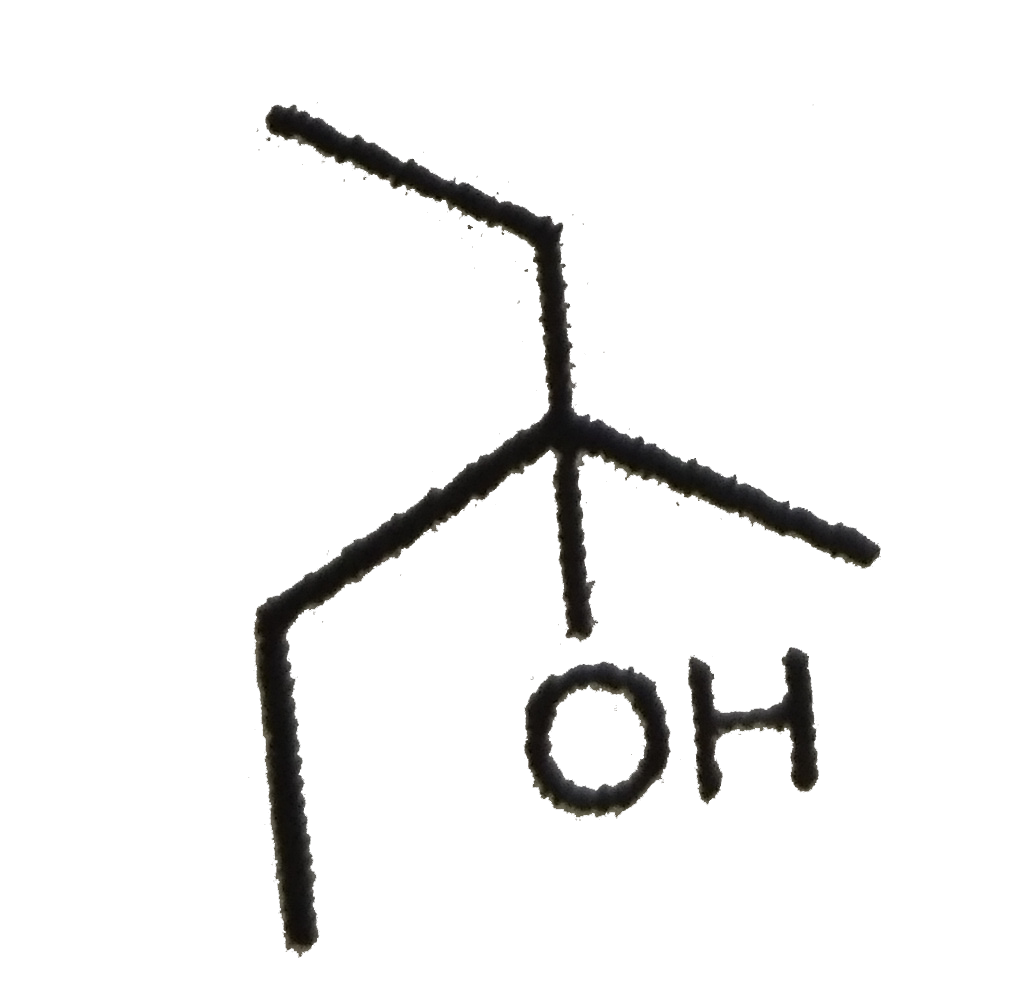Oxymercuration and Demurcuration of alkenes.
Step-by-Step Solution for Oxymercuration and Demercuration of Alkenes
Step 1: Understanding the Reaction
- Oxymercuration and demercuration is a two-step reaction process used to convert alkenes into alcohols.
- The reaction proceeds via the Markovnikov rule, which states that in the addition of HX to an alkene, the hydrogen atom (H) will attach to the carbon with the greater number of hydrogen atoms, while the hydroxyl group (OH) will attach to the carbon with fewer hydrogen atoms.
Step 2: Oxymercuration
1. Reagents: The reaction begins with an alkene (e.g., CH2=CH2) and the reagents mercuric acetate (Hg(OAc)2) and water (H2O).
2. Formation of Mercurinium Ion: The double bond of the alkene attacks the mercury ion (Hg^2+), forming a cyclic mercurinium ion (a three-membered ring). This occurs because the alkene has a high electron density.
3. Nucleophilic Attack: Water acts as a nucleophile and attacks the more substituted carbon of the mercurinium ion, leading to the formation of an alcohol. The oxygen from water attaches to the carbon with the more stable positive charge (the more substituted carbon).
4. Formation of Alcohol: The product after this step is an organomercury compound (R-CH(OH)-CH2-Hg(OAc)).
Step 3: Demercuration
1. Reagents: In the second step, sodium borohydride (NaBH4) is used for demercuration.
2. Reduction: Sodium borohydride dissociates into Na^+ and BH4^-. The hydride ion (H^-) from BH4^- attacks the carbon bonded to mercury, resulting in the removal of the mercury group.
3. Final Product: The final product is an alcohol (R-CH(OH)-CH2-H) and the byproduct is mercury acetate (Hg(OAc)).
Step 4: Summary of the Reaction
- The overall reaction converts an alkene into an alcohol without rearrangement and follows the Markovnikov rule:
AlkeneHg(OAc)2, H2O−−−−−−−−−→Organomercury compoundNaBH4−−−−→Alcohol
- Oxymercuration and demercuration is a two-step reaction process used to convert alkenes into alcohols.
- The reaction proceeds via the Markovnikov rule, which states that in the addition of HX to an alkene, the hydrogen atom (H) will attach to the carbon with the greater number of hydrogen atoms, while the hydroxyl group (OH) will attach to the carbon with fewer hydrogen atoms.
1. Reagents: The reaction begins with an alkene (e.g., CH2=CH2) and the reagents mercuric acetate (Hg(OAc)2) and water (H2O).
2. Formation of Mercurinium Ion: The double bond of the alkene attacks the mercury ion (Hg^2+), forming a cyclic mercurinium ion (a three-membered ring). This occurs because the alkene has a high electron density.
3. Nucleophilic Attack: Water acts as a nucleophile and attacks the more substituted carbon of the mercurinium ion, leading to the formation of an alcohol. The oxygen from water attaches to the carbon with the more stable positive charge (the more substituted carbon).
4. Formation of Alcohol: The product after this step is an organomercury compound (R-CH(OH)-CH2-Hg(OAc)).
1. Reagents: In the second step, sodium borohydride (NaBH4) is used for demercuration.
2. Reduction: Sodium borohydride dissociates into Na^+ and BH4^-. The hydride ion (H^-) from BH4^- attacks the carbon bonded to mercury, resulting in the removal of the mercury group.
3. Final Product: The final product is an alcohol (R-CH(OH)-CH2-H) and the byproduct is mercury acetate (Hg(OAc)).
- The overall reaction converts an alkene into an alcohol without rearrangement and follows the Markovnikov rule:
AlkeneHg(OAc)2, H2O−−−−−−−−−→Organomercury compoundNaBH4−−−−→Alcohol
Topper's Solved these Questions
Similar Questions
Addition of mercuric acetate in the presence of water is called as oxymercuration.The adduct obtained gives alcohol on reduction with NaBH4 in alkaline medium.This is known as demercuration.Oxymercuration demercuration allows Markownikoff's addition of H, OH without rearrangement.The net result is the addition of H2O Answer the following question :

View SolutionAddition of mercuric acetate in the presence of water is called as oxymercuration.The adduct obtained gives alcohol on reduction with NaBH4 in alkaline medium.This is known as demercuration.Oxymercuration demercuration allows Markownikoff's addition of H, OH without rearrangement.The net result is the addition of H2O Answer the following question :

Product 'A'is :
View Solution on oxymercuration demercuaration produces the major product
on oxymercuration demercuaration produces the major product
View SolutionHydration reaction of alkene is catalyzed by dilute acid. Selection of acid is important . Conjugate base of the acid should not interfere in the reaction. There are other means by which alkenes can be converted to alcohols. Oxymercuration demercuration gives Markovnikoff's alcohols while hydroboration oxidation give Anti Markovnikoff's alcohol.
The reagent required to perform the given transformation is

View Solution3 - methyl - 1 - butene on oxymercuration - demercuration yields . . . . . . As the major product
View SolutionAcid-catalysed hydration oxymercuration-demercu-ration, and hydroboration oxidation reaction will give the same product with:
View SolutionHydrogenation of alkenes yields
View SolutionWhy do alkenes undergo electrophilic addition reactions ? Discuss the mechanism of electrophilic addition reactions of alkenes.
View SolutionIdentify the alkene which will not provide the following alcohol upon oxymercuration demercuration.

View SolutionWhich is the wrong statement about oxymercuration − demercuration ?
View Solution